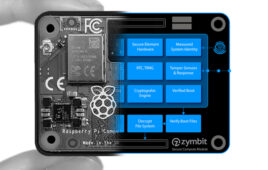The heavier an aircraft is, the more fuel it needs to stay in flight. Every single part adds to the total weight of the aircraft, from the wings to the engines to the bolts that hold everything together. The many parts that make up a vehicle are traditionally made using various machining processes in which raw materials are cut into their desired final shapes. However, traditional machining processes like milling or grinding are limited when it comes to optimizing shapes for the lowest weight. These traditional machining methods have led to manufacturers creating many separate parts that fit together—but this doesn’t have to be the case.
Kate Whitefoot, an assistant professor of mechanical engineering and engineering & public policy, and Levent Burak Kara, a professor of mechanical engineering, are developing methods allowing manufacturers to consolidate discrete parts, by taking multiple different sized parts and redesigning them into a single part. This continuous part could then be 3D printed in metal.
Additive manufacturing, also known as 3D printing, allows for the production of new shapes that could not formerly be produced. As members of Carnegie Mellon’s NextManufacturing Center, Whitefoot and Kara are using additive manufacturing to reimagine what’s possible when creating component parts.
“What parts consolidation allows us to do is monolithically make components that would normally have to be assembled together,” says Whitefoot. “This can substantially reduce the costs associated with making those parts, and also potentially allow us significant weight savings. So this is something that manufacturers are really interested in, particularly in industries like aerospace and automotive.”
By consolidating multiple different sized parts into one part, Whitefoot can decrease the number of fasteners, remove mating surfaces associated with the parts, and monolithically print these parts. Under certain conditions, this can make them stronger than multiple parts that were, for example, welded together.
By redesigning the geometry of the parts to further reduce weight, Whitefoot’s research could revolutionize many industrial sectors—particularly aerospace and automotive. When part consolidation is leveraged to bring down the production costs associated with the process, additive manufacturing becomes more cost competitive with more traditional manufacturing methods. By consolidating parts, Whitefoot and Kara are not only reducing production cost and weight savings, but also significantly decreasing the time spent printing the build.
One reason why this is so attractive in the aerospace sector is because pounds directly translate into fuel use throughout aircrafts’ lifetimes. Every ounce saved by optimizing a part’s size and weight can help offset that fuel use, thereby reducing costs and environmental impacts.
“If we can use these methods to significantly reduce production costs, then many more industries would be able to adopt additive and then take advantage of the performance benefits that it can bring,” says Whitefoot, “which includes opening up the design space and potentially causing significant weight savings, having huge cost and environmental benefits when it comes to applications where we translate into fuel use.”
Being able to merge parts and produce them as one single monolithic part is a giant leap for parts manufacturing, but the researchers want to take it a step further—towards automatic redesign. Whitefoot is working with Kara to automate the optimization of metal part shapes created through additive manufacturing—minimizing the weight of these parts, as well as the cost of production.
“With the advance of additive manufacturing, now we can manufacture more complex geometries,” says Kara. “One thing that makes additive topology optimization attractive is that we can now manufacture parts that were only theoretically possible before. Within the parts, complex internal geometries can be produced to minimize the overall mass of the part, while making sure that the structure can withstand all the external forces applied to it as well as a traditionally machined part could.”
Whitefoot and Kara are developing methods that allow for the automatic optimization of parts. With this research, a manufacturer could upload a CAD file of a set of parts, and these methods would automatically gauge the optimal way this set of parts should be consolidated.
“Taking several parts and automatically being able to synthesize them into one uniquely geometric part may not have been feasible before,” Kara adds, “but with additive manufacturing, we can now not only optimize for the best combination of these parts, we can actually create the parts that were impossible to create with traditional machining methods.”
Whitefoot and Kara are currently undergoing an initial one-year project with Boeing to demonstrate the feasibility of the methods they’ve developed. On the commercial market, it takes time to move from having a workable method in the research stage to actual commercial life ability—but the researchers forecast that this technology could be available commercially within a five-year time horizon.
“We’re doing this to help additive manufacturing engineers and designers streamline the process of creating more automated tools,” says Whitefoot, “so additive design can really move from an art to a science.”
Filed Under: Product design




